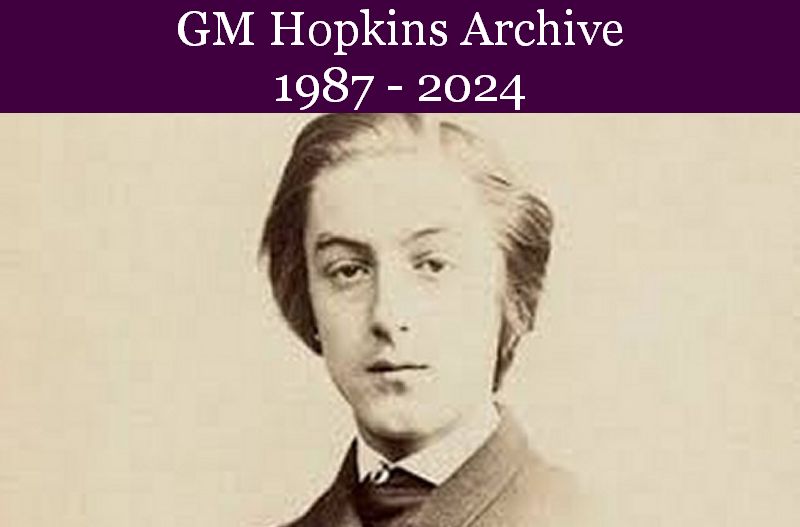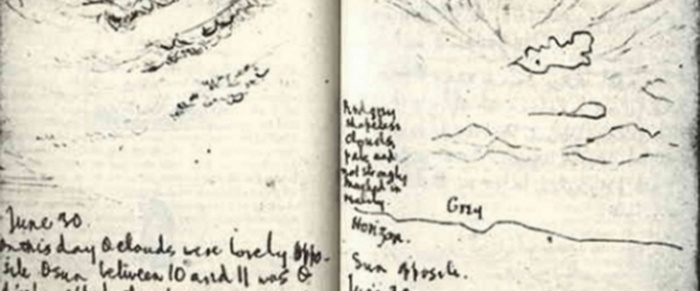Index of Lectures at Hopkins Literary Festival 2017
With A Friend Like That ... Robert Bridges's 'Preface to Notes'
William AdamsonHead of English in the Centre for Languages and Philology ,
University of Ulm
Germany
To say that recent studies on Robert Bridges, Britain's poet laureate from 1913 until his death in 1930, are rare is perhaps overstating the issue: there is none. The last biography dates from 1992,1 with four other works dedicated to Bridges appearing sporadically between 1914 and 1962.2 However, in the nineteen seventies and eighties one man, the American critic Donald E. Stanford, devoted a great deal of time to research on Bridges, resulting in no less than seven books either authored or edited.
John Berryman in Dublin; his high regard for Hopkins's Poetry
This article is based on a Lecture given at the 34th Hopkins Festival July 2017Patrick Samway, S.J.
Saint Joseph's University US
1970 John Berryman: The Art of Poetry No. 16 1970 The United States has profited enormously from the presence of Irish poets residing on its shores. One might think of Thomas Kinsella, born in the Inchicore area due west of Dublin, who after studies at University College Dublin entered the Irish civil service, later to become writer in residence at Southern Illinois University and in 1970 professor of English at Temple University. Or perhaps, Eavan Boland, a native of Dublin and a graduate of Trinity College, who is currently a professor of English and Director of the Creative Writing Program at Stanford University. If one were to include poets from Northern Ireland, then certainly Paul Muldoon, born on a farm in County Armagh, should be included. At Princeton University, he is both the Howard G. B. Clark Professor in the Humanities and Founding Chair of the Lewis Center for the Arts. And, of course, one must include the late Seamus Heaney from County Londonderry. A Nobel Prize winner, Heaney was professor of English at Harvard from 1981 to 1997, and its poet in residence from 1988 to 2006.
Read Samway Hopkins on Berryman in Dublin - on Hopkins Influence
Dark Mind, Light Soul: A Reassessment of Hopkins's Terrible Sonnets
This article is based on a Lecture given at the 34th Hopkins Festival July 2017Robert Smart,
Quinnipiac University USA
Rather than reflecting a spiritual failure on Hopkins’ part,
a final anguished and unanswered call for connection with his god or a
deep personal depression, Professor Robert Smart argues that Hopkins'
Terrible Sonnets
represent an aesthetic crisis, a period in which
Hopkins’ reliance on a received, neo-Romantic lexicon to express his
grasp of God’s work needed to change as his materials and
self-understanding grew.
Hopkins, Neurosis and Art
Desmond Egan,Poet,
Director Hopkins Literary Festival.
Art is created by people who have the usual limitations that flesh is heir to. This truism is often overlooked when the link between art and illness comes up for discussion - hence that opening quotation from Martins as a summary of popular misconceptions in this area. Some artists, writers, poets will be unhealthy in one way or another. Illness is part of life. It is an experience which, like any other, will have an influence on the artist. True - but there is a difference in kind between work undertaken as therapeutic exercise - by patients, say - and that of someone like Frieda Kahlo or Gerard Manley Hopkins. They were sufferers, yes, but being artists they could move beyond individual hurt to some perception of a universal truth.
Hopeful Hopkins, Essays by Desmond Egan
(120 pp, The Goldsmith Press, € 20)
Book Review: Dr William AdamsonHead of English in the Centre for Languages and Philology ,
University of Ulm Germany
Gerard Manley Hopkins is not the subject of many new studies. This is regrettable, as he holds a significant place within in the canon of poetry in English and has had, and continues to have, an incontestable influence on many poets of the 20th century and beyond, including Ezra Pound, Dylan Thomas, John Berryman, Elizabeth Bishop, Robert Lowell, and Denise Levertov. Indeed, it would be difficult to imagine modernist poetry without him. This is why Desmond Egan’s latest contribution to Hopkins studies, Hopeful Hopkins, a collection of essays on, or based around the 19th century Jesuit priest and poet, is both necessary and refreshing.
A Reassessment of Hopkins's Terrible Sonnets
Robert Smart,Quinnipiac University,
USA
The Terrible Sonnets do not reflect a spiritual
failure on Hopkins's part, a final anguished and unanswered call for
connection with his god. Nor are the poems an expression of deep
personal depression, although the underlying modus in the poems does
brush up against this particular tendency in our young poet. Secondly,
I want to make the case, or at least suggest a means to make the case
that the poems in fact more represent an aesthetic crisis, a period in
which Hopkins' reliance on a received, neo-Romantic lexicon to express
his grasp of God's work needed to change as his materials and
self-understanding grew.
Reassessment of Hopkins Terrible Sonnets
Hopkins Lectures 2017
Read Book Review: Hopeful Hopkins by Desmond Egan
Bridges Preface to Hopkins' Poems: William Adamson Univ. Ulm
Berryman John and GM Hopkins: Patrick Samway SJ
Neurosis and Art: Desmond Egan
Irish Exile and Terrible Sonnets : Robert Smart Quinnipiac
William Adamson, Univ. Ulm: Poet
Laureate Robet Bridges Hopkins' Friend


